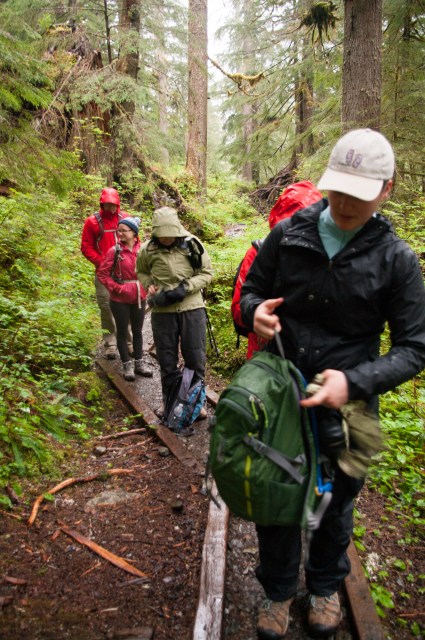 Outdoor Life
Outdoor Life
Kelly Butte Lookout
One of my favorite things to do in the summer is climb to lookouts. My first of this year was Kelly Butte on the July 4th weekend. My husband drove us to the trailhead through a meandering of forest roads and I was surprised at the chill in the air when I opened my car door at the trailhead.

Clouds clung to the top the mountain and I was positive we’d be socked in at the top, but every now and then the sun would poke out to give us a little hope of views at the top.

The trail starts out lazily on an old continuation of the road through forest. We let Nali off the leash to run free and smell all the smells. Soon we arrived at the official trailhead where it abruptly switchbacks up and up through some fascinating geologic features. One particular rock outcrop looks like stairs and I joked that we could just climb up them for a shortcut.

Instead we kept to the narrow trail rising along the steep slope. I read that originally this area had a makeshift climbers trail that had to be scrambled up. While this seems plausible, I was happy for the tread.

Once cresting the steep section the trail opens up into broad meadows. Red paintbrush, blue lupine and white beargrass painted the slopes in patriotic splendor as the grade eased to mellow.

The sun still poked in and out of fast-moving low clouds. We delightedly watched them whip by. As we climbed we entered an alpine forest shrouded in fog. The white of the beargrass stood out on the background of dark green meadow like constellations. Soon we caught a glimpse of the lookout in the mist.

The lookout was open and we let ourselves in to take shelter from the cold and enjoy our lunch. We were amazed at the care that was taken to keep the lookout in amazing shape. The structure was originally built in the 1920’s and rebuilt several times with the latest restoration in 2011. A nice plaque hangs commemorating the volunteer effort to preserve this piece of history.

As we ate our pb & j sandwiches the wind picked up and whistled through the rafters. As usual while in a lookout, I thought about what it would be like to be there during a storm and got a little thrill in my stomach. I felt safe and secure in the lookout and lingered as long as possible.

Before leaving I flipped through the register notebook. Not many people had been there recently, in fact we only saw a few others on the trail that day. I scribbled a line for me, my husband and the dog and then almost as an afterthought, added a plus one. I scribbled “and Baby G (16 weeks pregnant!)” with a big smile on my face. As we put on our jackets to head back down the trail I hoped that our baby could feel he happiness, love and contentment I felt on that mountain.
Hikes Featured in this Post:










































































